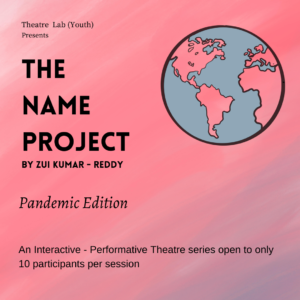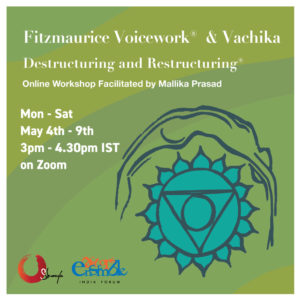Mayurbhanji Chhau Basics Workshop by Padma Shri Ileana Citaristi
Dance-Movement Martial arts
Workshop
Sat, 02 Nov 2019 Saturday & Sunday
10.00am - 2.00pm
₹2,800
EARLY BIRD: Rs. 2,400 (Last date : 22nd October)
Fees: Rs. 2,800
The workshop is open to dance / theatre practitioners and in general to people who have some experience of body movement practice (in yoga or allied disciplines).
ಈ ಕಾರ್ಯಾಗಾರ ನೃತ್ಯ / ರಂಗಭೂಮಿ ವೃತ್ತಿಗಾರರಿಗೆ ಮತ್ತು ಸಾಮಾನ್ಯವಾಗಿ ದೇಹದ ಚಲನೆಯ ಅಭ್ಯಾಸದ ಅನುಭವವನ್ನು ಹೊಂದಿರುವ ಜನರಿಗೆ (ಯೋಗ ಅಥವಾ ಸಂಬಂಧಿತ ವಿಭಾಗಗಳಲ್ಲಿ) ತೆರೆದಿರುತ್ತದೆ.
2nd and 3rd Nov
Saturday & Sunday
10.00am – 2.00pm
EARLY BIRD: Rs. 2,400 (Last date : 22nd October)
Fees: Rs. 2,800
|| Structure
Day 1 – basic body stances and few basic Chhau steps will be taught with a simple coordination between the opposite dynamics of attack and defence.
Day 2 – few choreographic compositions will be attempted by utilising the basic steps learnt and their variations.
|| About the Teacher
Dr. Ileana Citaristi is an Italian-born Odissi and Chhau dancer, guru and choreographer, based in Bhubaneshwar, India since 1979. She was awarded the 43rd National Film Awards for Best Choreography for Yugant, a Bengali film directed by Aparna Sen, in 1996 and conferred with the Padma Shri by the President of India in 2006 for her contributions to Odissi dance.
Besides Yugant, Dr. Citaristi has also choreographed for M.F. Hussain’s Meenaxi: Tale of Three Cities (2003) and Goutam Ghose’s Abar Aranye (2004). Dr. Citaristi is the author of three books; ‘The Making of a Guru: Kelucharan Mohapatra, His Life and Times’ (2001), ‘Traditional Martial Practices in Orissa’ (2012) and ‘My journey, a tale of two births’ (2015). She is imparting training in Odissi and Chhau dance in her own institution Art Vision in Bhubaneswar, founded by her in 1996.
|| About the form
“The Mayurbhanji Chhau style of dance attracted me from the very beginning for the modernity and freedom of its technique and conception of body movements.”
In this style ample scope is given to the dynamic opposition as well as synchronisation between the upper torso and the lower part of the body; contractions and expansions, wave and sideways motions of the torso are used in highly eloquent relation with a variety of legs movements. What gives the style its vast expressiveness is essentially this ample use of leg expansions and elevations; keeping the knee as pivot and the bending of the hip as balancing point, the calves can rotate, stretch, bend, kick, contract, jump in each and every direction, high or low, front or back, sideways or oblique.
The relation between the movement of the upper part of the body and those of the hips and legs is so original and explored in all its variants that it seems no further combination could be possible. To each of these units has been given a name which associates that particular movement with an action belonging to the daily work of men, women and animals.
Another basic element which is inherent to the style is the possibility to balance the entire weight of the body either on one or the other of the legs. Besides giving the movements a quality of lightness and gracefulness this is also a very useful element in choreography, especially when abstract meanings have to be conveyed. Apart from the intrinsic dynamic of each single movement, the entire structure on which the style is built is also very interesting. It consists of an alphabet of single and combined movements which can be utilised in a myriad of combinations. Forward locomotion with their symmetrical counterpart in the backward direction together with diagonal and circular patterns offer the possibility to cover the space in all the possible ways.


